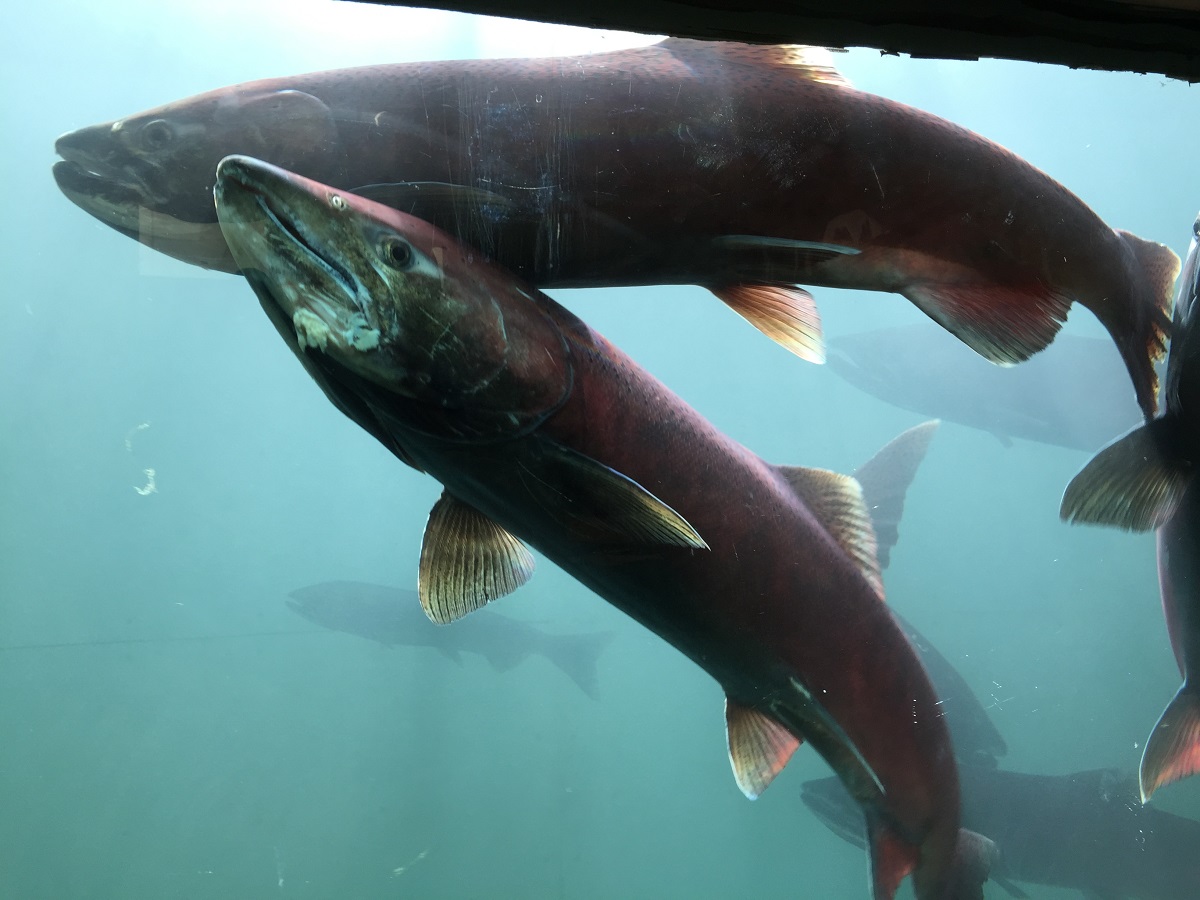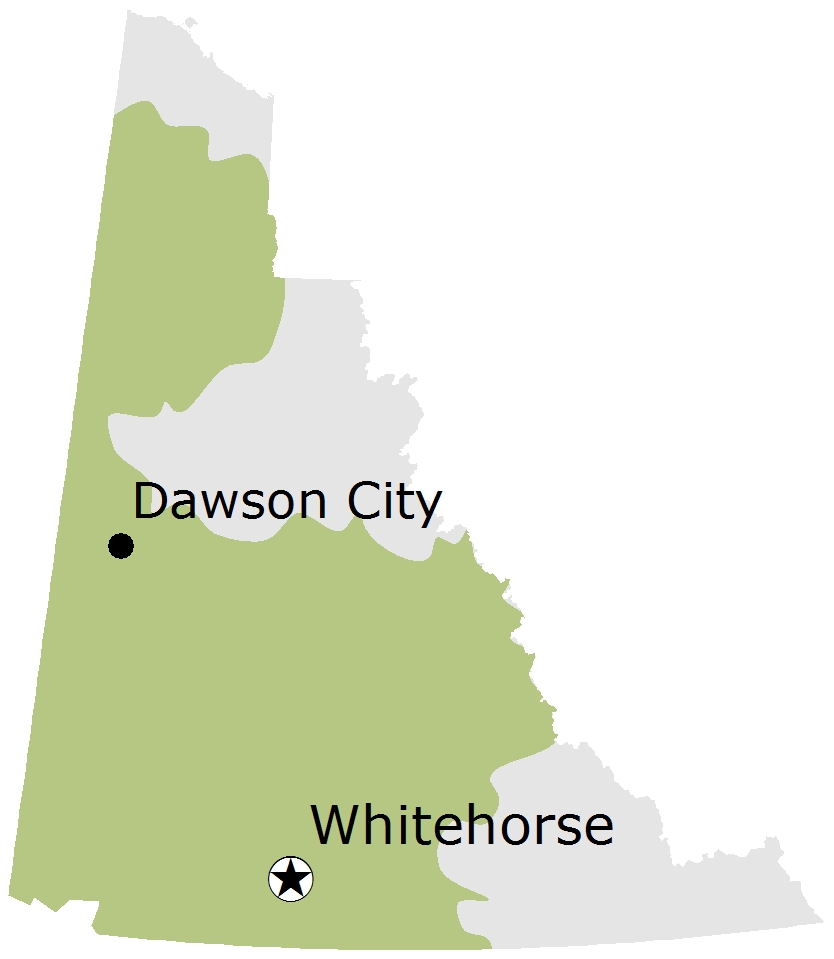
Name
- Common name: Chinook Salmon
- Scientific name: Oncorhynchus tshawytacha
- Order: Salmoniformes
- Sub-family: Salmoninae
Also known as
Spring Salmon, King Salmon, Tyee, Quinnat, Blackmouth
Viewing opportunities
- Chinook Salmon are the second most abundant salmon in the Yukon but only return to freshwater rivers to spawn.
- View Chinook Salmon at the Whitehorse Fish Ladder in July and August. This is one of the most popular tourist attractions in Whitehorse.
Description
- Small, irregular black spots on back including dorsal and caudal fins.
- Gum line of lower jaw is black.
- Spawning fish have dark backs with pink to dark red on their sides.
Fast facts
- Length: 51 to 120 cm
- Weight: 5 to 14 kg
- Habitat: Anadromous
Conservation status
- Yukon: S2S3B (Imperilled/Vulnerable-Breeding)
- Global: G5 (Secure)
Yukon population estimate
Not determined.
Behaviour
The Chinook Salmon is the largest of the Pacific salmon with the largest known weight recorded at 57 kg. They spawn in late summer and early autumn on the gravel and cobble beds of rivers and streams. In some places, “spawning dunes” have developed from salmon spawning in the same place for thousands of years.
Diet
Juveniles feed on terrestrial and aquatic insects and crustaceans; spawning adults do not feed.
Distribution

Chinook Salmon and people
- Chinook Salmon have been a mainstay of many Yukon First Nations’ seasonal diets for generations.
- Current low returns of spawning adults have required significant sacrifices by subsistence and recreational harvesters to achieve conservation goals.